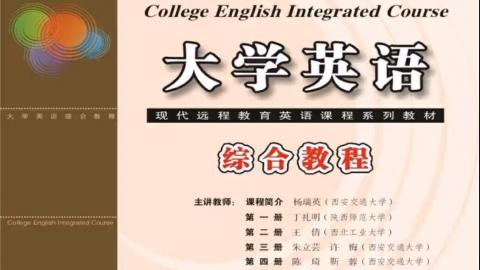;般现在时
一般现在时的构成
一-般现在时的构成有三种情况:
(1)be动词:主语+be(am,is,are)+其他。,
e.g.|amaboy.我是一一个男孩。
(2)行为动词:主语+动词原形(+其他)。
e.g. We study English.我们学习英语。
一般现在时的构成有三种情况
(1)be动词:主语+be(am,is,are)+其他
e.g i am a boy
(2)行为动词:主语+动词原形(+其他)
e.g行为动词:主语+动词原形(+其他)
e.gWe study English.我们学习英语
当主语为第三人单数(he,she,it)时,要在动词后加-s或-es
e.g Mary likes Chinese玛丽喜欢汉语,
二,一般现在时的变化
be 动词的变化
(1)否定句,主语+be+not+其他
e.g He is not a worker.他不是工人
(2)一般疑问句:Be+主语+其他
e.g Are you a student?你是学生吗?
Yes. I am./No, I'm not.是,我是的。/不,我不是的。
(3)特殊疑问句:疑问词+一般疑问句
e.g Where is my bike?我的自行车在哪?
2.行为动词的变化
(1)否定句:主语+don't(doesn't)+动词原形(+其他)。
e.g i don't like bread.我不喜欢面包
一、一般现在时的构成
一般现在时的构成有三种情况:
(1)be 动词: 主语 + be (am,is,are) + 其他。
(2)行为动词:主语+动词原形(+其他)。
当主语为第三人称单数(he,she,it)时,要在动词后加 -s 或 -es。
二、一般现在时的变化
1、be 动词的变化
(1)否定句:主语 + be +not + 其他。
(2)一般疑问句:Be + 主语 + 其他。
(3)特殊疑问句:疑问词 + 一般疑问句。
2、行为动词的变化
(1)否定句:主语 + don't ( doesn't ) +动词原形 (+其他)。
当主语为第三人称单数时,要用 doesn't 构成否定句。
(2)一般疑问句:Do ( Does ) + 主语 + 动词原形 + 其他。
当主语为第三人称单数时,要用 does 构成一般疑问句。
(3)特殊疑问句:疑问词 + 一般疑问句。
三、一般现在时的用法
(1)一般现在时表示经常性或习惯性的动作,常与表示频度的时间状语 every day,usually,always,often,some-times,on sunday 等连用。
(2)一般现在时表示客观存在及普遍真理。
e.g. Summer follows spring.
春天之后是夏天。
(3)一般现在时表示格言或警句。
e.g. Pride goes before a fall. 骄者必败。
(4)一般现在时表示目前的情况或状态。
(5)以 here,there 等开始的倒装句,表示动作正在进行。
e.g. Here comes the bus. = The bus is coming. 车来了。
There goes the bell. = The bell is ringing.
铃响了。
(6)在下列情况下表示将来:
A. 在状语从句中用一般现在时代替一般将来时。
B. 在 the more……the more……(越……越……)句型中,前者通常用一般现在时代替一般将来时,因为前者相当于条件状语从句。
C. 在 make sure ( certain ),see to it,mind,care,matter 后的宾语从句的谓语动词用一般现在时代替一般将来时。
D. 表示按计划或时间表将要发生的动作,通常有表示将来的时间状语。
注:这种用法只限于少数动词,如 begin,start,end,finish,stop,go,come,leave,arrive,return,close,open 等。
be动词
主语+be+not+
be+主语+其他
(2)行为动词的变化
(3)一般现在时的用法;
1.在状语从句中用一般现在时代替一般将来时
2.the more
eg;
1.we often play in the piayground..
2.Does mike read english every day?
3.She likes milk.
一般现在时
be动词
主语+be+not+
be+主语+其他
(2)行为动词的变化
(3)一般现在时的用法;
1.在状语从句中用一般现在时代替一般将来时
2.the more
eg;
1.we often play in the piayground..
2.Does mike read english every day?
3.She likes milk.
一般现在时:
1、be动词:主语+be+其他成分
I am\he is\you are
2、行为动词:
a.主语+动词原形+其他成分
e.g. we study English.
b.主语为第三人称单数,动词后加s\es
e.g. Mary likes Chinese.
3、be动词的变化:
a.否定句:主语+be+not+其他成分
e.g. He is not a student.
b.一般疑问句:Be+主语+其他成分
e.g. Are you a student?
c.特殊疑问句:疑问词+一般疑问句
e.g. Where is my bike?
4.行为动词的变化:
a.否定句:主语+don't(doesn't)+动词原形+其他成分
e.g. I don't like apple./He doesn't like apple.
b.一般疑问句:Do(Does)+主语+动词原形+其他成分
e.g. Do you like apple?/Does he like apple?
c.特殊疑问句:疑问词+一般疑问句
e.g. What do you like?
一般现在时
1、be动词:主语+be(am、is、are)+其他
2、行为动词:主语+动词原形+其他
3、当主语为第三人称单数(he、she、it)时,要在动词后面加-s或-es
变化
be动词的变化
否定句:主语+be+not+其他
一般疑问句:be+主语+其他
特殊疑问句:疑问词(who 、how、where、when)+一般疑问句
2、定位动词的变化
(1)否定句:主语+don't(doesn't)+动词原形+其他
当主语为第三人称单数时,要用doesn't构成否定句。
当主语为第三人称单数,要用does构成一般疑问句。
(2)一般疑问句:do(does)+主语+动词原形+其他
(3)特殊疑问句:疑问词+一般疑问句
一般现在时的用法
一般现在时表示经常性或习惯性动作,常与表示频度的时间状语(every day,usually、always、often、sometimes,on sunday)
一般现在时表示客观存在及普遍真理
一般现在时表示格言或警句
pride 骄傲
一般现在时表示目前的情况或状态
以here,there等开始的倒装句,表示动作正在进行。
在下列情况下表示奖励
a、在状语从句中用一般现在时替代一般将来时
b、在the more......the more(越。。。越。。。)句型中,前者通常用一般现在是代替一般将来时,因为前者相当于条件状语从句
c、在make sure(certain 某些),see to it,mind,care
,matter后的宾语从句的谓语动词用一般现在时代替一般将来时
d、表示安计划或时间表示将要发生的动作,通常有表示将来的时间状语。(这种用法只限于少数动词,瞬间动词,如begin,start,end,finish,stop,go,come,leave,arrive,return,close,open等)
let's do it 固定搭配
pride goes before a fall 骄者必败
否定句:主语+be+not+其他
一般疑问句:Be++
格言:Pride goes before a fall. 骄者必败
一般现在时的用法:
1. 表示经常性或习惯性的动作,常于表示频度的时间状语 every day, usually, always, often, sometimes, on sunday等连用。
2. 表示客观存在及普遍真理。
3. 表示格言或警句。
fall v. 摔倒(在地上) goes before 在...前边
4. 表示目前的情况或状态。
eg: I am a teacher.
Peter writes goos Chinese but does not speak well.
5. 以 here, there等开始的倒装句,表示动作正在进行。
eg: Here comes the bus=The bus is coming.
6. 在下列情况下表示将来:
A. 在状语从句中拥一般现在时代替一般将来时。
eg: I will give it to him as soon as I see him.
B. 在 the more..the more..(越...越...)句型中,前者通常用一般现在时代替一般将来时,因为前者相当于条件状语从句。
C. 在make sure(certain),see to it, mind, care, matter后的宾语从句的位于动词用一般现在时代替一般将来时。
eg: See to it that you are not late again.
注意别再迟到了。
D. 表示按计划或时间表将要发生的动作,通常有表示将来的时间状语。
eg: The plane takes oss at 11:30 and arrives in Shanghai at 1:20.
注:这种用法只限于少数动词(瞬间动词),如 begin, start, end, finish, stop, go, come, leave, arrive, return, close, open等。
Be是动词,
否定句主语+be+not+其他
He is not a worker他不是工人
it’s time to + 做什么的时候到了
speak lan'gu
often经常,
一般现在时的用法
the more ...the more ...越.........越...........
一般现在时
9.26 6:38 4
C在make sure(certain),see to it ,mind,care,matter后的宾语从句的谓语动词用一般现在时代替一般将来时
例:See to it that you are not late again
注意别迟到了
D表示按计划或时间表将要发生的动作,通常有表示将来的时间状语。
例:The plant takes off at 11:30 and arrives in Shanghai at 1:20飞机十一点半起飞,一点二十分抵达上海
注意:这种用词只限于少数动词,如begin, start,end ,finish, stop, go, come , leave , return , close , open等
一般现在时,一般将来时,一般过去时
